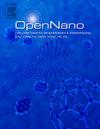Development and evaluation of drug-loaded niosomes fabricated by flow chemistry: A novel vortex tube reactor approach
Q2 Pharmacology, Toxicology and Pharmaceutics
引用次数: 0
Abstract
Continuous flow technology has been increasingly applied in the fabrication of nanoparticle drug delivery systems due to its ability to provide enhanced process control, scalability, and improved uniformity in particle size. Therefore, this study aims to utilize a newly designed flow chemistry vortex tube reactor for the preparation of ketoconazole-loaded niosomes, with the goal of enhancing mixing efficiency and increasing production rates. The experiment was designed using a central composite design to investigate the effects of key preparation parameters, including total flow rate, surfactant concentration, and cholesterol content, on particle size, size distribution, zeta potential, entrapment efficiency, and drug loading percentage. The optimized formulation (Span 80 = 25 mg, Cholesterol = 50 mg) was achieved using a total flow rate of 20 mL/min. The resulting niosomes exhibited a particle size of 212.3 nm, a zeta potential of 40.2 mV, a polydispersity index of 0.282, an entrapment efficiency of 50.84 %, a drug loading of 0.58 %, and a productivity of 70.67 mg/min. Moreover, ketoconazole-loaded niosomes prepared using the newly designed flow chemistry vortex tube reactor demonstrated prolonged inhibition of Candida albicans growth compared to ketoconazole solution. A comparison with batch synthesis revealed that flow chemistry produces smaller particles with a narrower size distribution and significantly improved productivity. These findings indicate the potential for further development of the vortex reactor for industrial-scale production of nanovesicular drug delivery systems.

流动化学制备载药小体的研究与评价:一种新型涡流管反应器方法
由于连续流技术能够提供增强的过程控制、可扩展性和颗粒尺寸的均匀性,因此它在纳米颗粒药物输送系统的制造中得到了越来越多的应用。因此,本研究旨在利用新设计的流动化学涡流管反应器制备负载酮康唑的纳米体,以提高混合效率,提高产量。本实验采用中心复合设计,考察了总流速、表面活性剂浓度和胆固醇含量等关键制备参数对样品粒径、粒径分布、zeta电位、包封效率和载药率的影响。在总流速为20 mL/min的条件下,获得最佳配方(Span 80 = 25 mg,胆固醇= 50 mg)。所得纳米粒粒径为212.3 nm, zeta电位为40.2 mV,多分散性指数为0.282,包封效率为50.84%,载药量为0.58%,产率为70.67 mg/min。此外,使用新设计的流动化学涡旋管反应器制备的负载酮康唑的ni质体与酮康唑溶液相比,对白色念珠菌的生长具有较长的抑制作用。与间歇合成的比较表明,流动化学生产的颗粒更小,粒径分布更窄,生产效率显著提高。这些发现表明涡旋反应器在工业规模生产纳米囊泡给药系统方面有进一步发展的潜力。
本文章由计算机程序翻译,如有差异,请以英文原文为准。
求助全文
约1分钟内获得全文
求助全文
来源期刊

OpenNano
Medicine-Pharmacology (medical)
CiteScore
4.10
自引率
0.00%
发文量
63
审稿时长
50 days
期刊介绍:
OpenNano is an internationally peer-reviewed and open access journal publishing high-quality review articles and original research papers on the burgeoning area of nanopharmaceutics and nanosized delivery systems for drugs, genes, and imaging agents. The Journal publishes basic, translational and clinical research as well as methodological papers and aims to bring together chemists, biochemists, cell biologists, material scientists, pharmaceutical scientists, pharmacologists, clinicians and all others working in this exciting and challenging area.
 求助内容:
求助内容: 应助结果提醒方式:
应助结果提醒方式:


